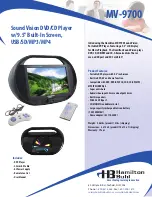
- 51 -
5.5.1.4
Make-up distilled water
The amount of water evaporating from batteries is
largely dependant on the operating conditions, i.e.
temperatures, number of starts, running time between
start and stop, etc...
If a battery starts to need excessive make-up water,
this points to overcharging. Most common causes are
high temperatures or a too high voltage regulator
setting.
If a battery does not need any make-up water at all
over a considerable time of operation, an
undercharged battery condition may be caused by
poor cable connections or a too low voltage regulator
setting.
5.5.1.5
Periodic battery service
– Keep the battery clean and dry.
– Keep the electrolyte level at 10 to 15 mm above
the plates or at the indicated level; top up with
distilled water only. Never overfill, as this will
cause poor performance and excessive corrosion.
– Record the quantity of distilled water added.
– Keep the terminals and clamps tight, clean, and
lightly covered with petroleum jelly.
– Carry out periodic condition tests. Test intervals
of 1 to 3 months, depending on climate and
operating conditions, are recommended.
– If doubtful conditions are noticed or malfunctions
arise, keep in mind that the cause may be in the
electrical system, e.g. loose terminals, voltage
regulator maladjusted, poor performance of
generator set, etc...
5.5.2
Checking belt tensioner spring
tension and belt wear
Belt drive systems equipped with automatic (spring)
belt tensioners cannot be adjusted or repaired. The
automatic belt tensioner is designed to maintain
proper belt tension over the life time of the belt. If the
tensioner spring is not within specification, replace
the tensioner assembly.
5.5.2.1
Checking belt wear
The belt tensioner is designed to operate within the
limit of arm movement provided by the cast stops (A,
B) when correct belt length and geometry is used.
– Visually inspect the cast stops (A and B) on the
belt tensioner assembly.
– If the tensioner stop on the swing arm (A) is
hitting the fixed stop (B), check the mounting
brackets (alternator, belt tensioner, idler pulley,
etc.) and the belt length.
– Replace the belt as specified in “Replacing fan
and alternator belts”, if required.
B
















































